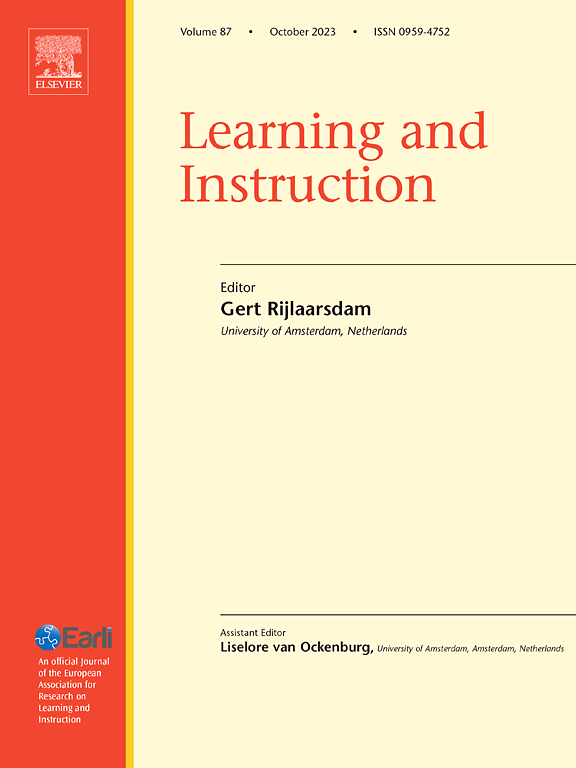Getting lost in new contexts: Weak generalization in artificial orthography learning among groups with literacy deficits
IF 4.9
1区 教育学
Q1 EDUCATION & EDUCATIONAL RESEARCH
引用次数: 0
Abstract
Background
It remains unclear whether poor reading and spelling abilities might be explained by common difficulties in linguistic generalization skills, i.e. transferring acquired grapheme-phoneme knowledge into the novel contexts.
Aims
This study aimed to examine the hierarchical process of artificial orthography learning, focusing on the progression from lower-to higher-level linguistic abilities in children with differing levels of literacy skills.
Sample
Three groups of school-aged children (Mage = 11.02; n = 82): with developmental dyslexia (DYS, n = 27), with isolated spelling deficit (n = 28) and typical readers and spellers (control group; CON, n = 27).
Methods
Artificial orthography learning task with 4 subtasks: Association, New Pseudowords, Position Rule and Neighbourhood Rule. After the learning phase, participants took a Test and performed a Production task validating acquisition of connections between symbols and speech sounds.
Results
Performance in generalization requiring new pseudowords identification was hindered in children with decreased literacy skills. Pace of learning measured by the number of task repetitions as well as the speed of execution was similar between groups.
Conclusions
Difficulties in the linguistic generalization skills are a shared component of literacy deficits, including dyslexia and an isolated spelling deficit.
在新环境中迷失:识字障碍群体中人工正字法学习的弱泛化
目前尚不清楚阅读和拼写能力差是否可以用语言泛化技能的共同困难来解释,即将已获得的字素-音素知识转移到新语境中。目的本研究旨在探讨人工正字法学习的分层过程,重点关注不同读写能力水平儿童从低水平到高水平的语言能力发展。三组学龄儿童(Mage = 11.02;n = 82):发展性阅读障碍(DYS, n = 27),孤立性拼写缺陷(n = 28)和典型的阅读和拼写者(对照组;CON, n = 27)。方法人工正字法学习任务包括关联、新假词、位置规则和邻域规则4个子任务。在学习阶段之后,参与者进行了一个测试,并执行了一个验证符号和语音之间联系的生成任务。结果识字能力下降的儿童在识别新假词的泛化能力方面表现不佳。通过任务重复次数来衡量的学习速度和执行速度在两组之间是相似的。结论语言概括能力障碍是读写障碍的共同组成部分,包括阅读障碍和孤立的拼写缺陷。
本文章由计算机程序翻译,如有差异,请以英文原文为准。
求助全文
约1分钟内获得全文
求助全文
来源期刊

Learning and Instruction
Multiple-
CiteScore
11.30
自引率
4.80%
发文量
109
期刊介绍:
As an international, multi-disciplinary, peer-refereed journal, Learning and Instruction provides a platform for the publication of the most advanced scientific research in the areas of learning, development, instruction and teaching. The journal welcomes original empirical investigations. The papers may represent a variety of theoretical perspectives and different methodological approaches. They may refer to any age level, from infants to adults and to a diversity of learning and instructional settings, from laboratory experiments to field studies. The major criteria in the review and the selection process concern the significance of the contribution to the area of learning and instruction, and the rigor of the study.
 求助内容:
求助内容: 应助结果提醒方式:
应助结果提醒方式:


